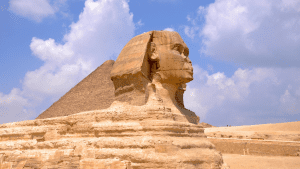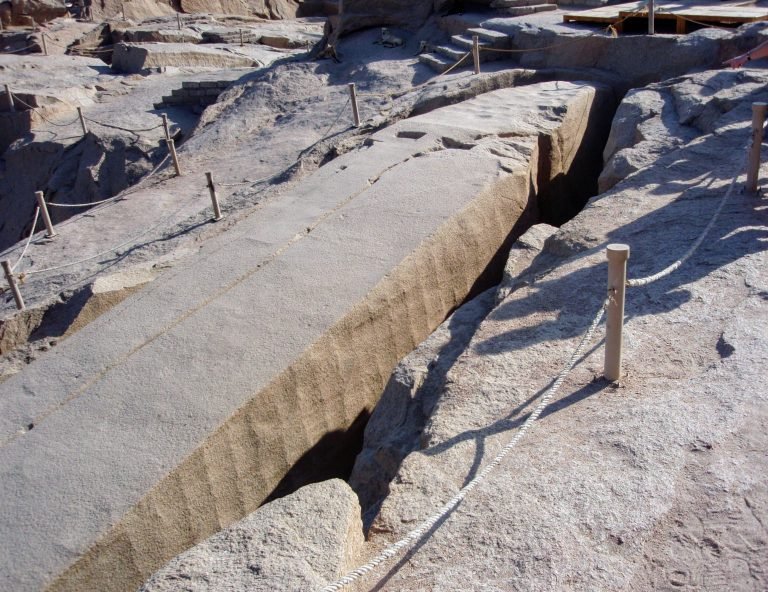
Home » Weekly Blog » The Unfinished Obelisk of Aswan: Egypt’s Monumental Mystery Revealed
The Unfinished Obelisk of Aswan: Egypt’s Monumental Mystery Revealed
Table of Contents
Egypt: a land of pharaohs, pyramids, and gods. Its history is so rich and layered that every stone seems to tell a story. Among these ancient relics lies a mystery carved from solid rock, standing as a testament to Egypt’s grand architectural ambition. However, this particular monument was never completed. Today, it sits abandoned, a colossal fragment of what could have been.
Welcome to Aswan, home to one of the most fascinating enigmas in ancient Egyptian history: the Unfinished Obelisk. Why was it left incomplete? What could it have told us about the civilization that dared to construct such ambitious monuments? Buckle up, because this post will take you on a journey back in time to explore the untold story behind Egypt’s largest obelisk that never saw the light of day.
The Historical Context of Obelisks in Ancient Egypt
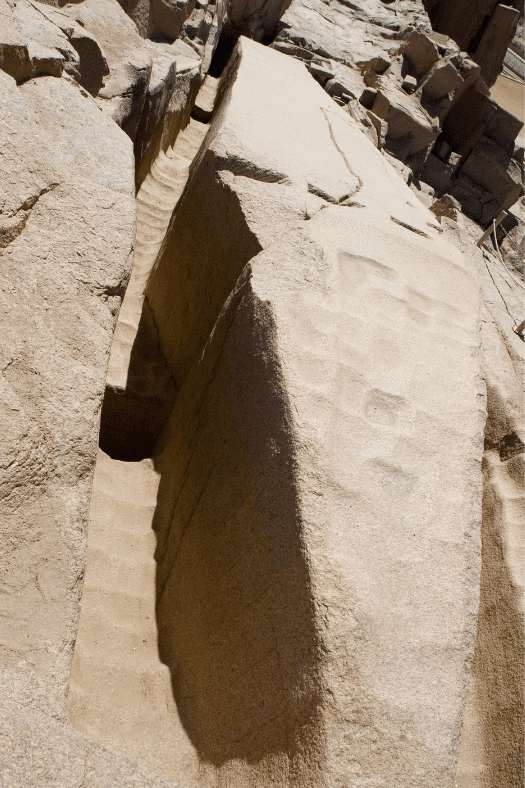
In ancient Egypt, obelisks were far more than just towering stone monuments; they were the embodiment of divine connection, power, and the nation’s eternal relationship with the sun. Obelisks were often erected in pairs at temple entrances, piercing the sky, acting as a bridge between the gods and the mortal world below.
What Obelisks Symbolized in Ancient Egypt
Obelisks, also called “tekhen” in ancient Egyptian, symbolized a ray of sunlight and were dedicated to Ra, the sun god. The Egyptians believed that the sun was a source of life, renewal, and power, and obelisks represented that divine energy radiating down to the earth. Each obelisk was, in a way, a physical prayer to the heavens, a reminder of the power of the gods and the kings who ruled in their name.
Crafted from a single slab of stone, these towering structures were feats of engineering genius and religious devotion. They often stood over 20 meters tall, weighing hundreds of tons, and were engraved with hieroglyphs celebrating the pharaoh’s divine lineage and accomplishments.
Notable Obelisks: From Egypt to the World
Egyptian obelisks didn’t stay confined to Egypt’s borders. Throughout history, some of the most impressive obelisks were moved, stolen, or gifted to other nations. Today, you can find Egyptian obelisks in cities like Rome, Paris, London, and New York. Each of these towering monuments serves as a testament to Egypt’s influence and the far-reaching admiration of their architectural prowess.
But there is one obelisk that didn’t make it out of its quarry. It was never engraved with triumphant inscriptions, nor did it stand tall in front of any temple. It remains half-buried in the earth, incomplete yet undeniably powerful in its own right: the Unfinished Obelisk of Aswan.
The Discovery and Location of the Unfinished Obelisk
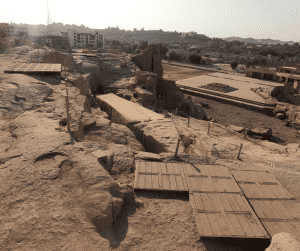
Aswan is a picturesque city along the Nile River, famous for its vibrant marketplaces and the Aswan High Dam. But beyond the bustle of modern life lies a treasure trove of ancient history. Aswan’s quarries were the source of much of the stone that ancient Egyptians used to build their temples and monuments, including the granite for some of Egypt’s most famous obelisks.
The Unfinished Obelisk rests in one of these quarries, embedded in the very stone from which it was carved. Discovered in modern times, it has become one of Aswan’s most visited and intriguing archaeological sites. It is a stark reminder of ancient Egypt’s sheer ambition and, at the same time, the limitations imposed by nature.
Where the Unfinished Obelisk Sits Today
The Unfinished Obelisk remains in its original quarry, lying partially attached to the bedrock. It’s as if time itself paused, leaving us a glimpse into the moment before this colossal stone was destined to be hoisted out of the earth.
At an estimated length of 42 meters (137 feet) and weighing about 1,200 tons, the Unfinished Obelisk is the largest known obelisk from antiquity. Had it been completed and erected, it would have stood taller and weighed more than any other obelisk ever created, dwarfing many of the world’s great stone monuments.
Today, visitors to Aswan can walk around the massive structure, climb nearby stones for a better vantage point, and marvel at the sight of a monument that was nearly destined for greatness but was ultimately abandoned due to a flaw that couldn’t be overlooked.
The Construction Process and Tools Used
How did ancient Egyptians manage to carve such colossal obelisks? The construction of an obelisk was a daunting task that required meticulous planning, coordination, and an impressive understanding of geometry, physics, and stone-working techniques.
Quarrying Obelisks: The Ancient Egyptian Method
Imagine a group of workers toiling under the hot Egyptian sun, armed only with rudimentary tools made from dolerite, a hard volcanic rock used to pound and carve the granite. Without the benefit of modern machinery or even iron tools, these ancient craftsmen would strike the granite with dolerite hammers for weeks, perhaps months, chipping away at the stone inch by inch.
The Unfinished Obelisk offers a rare and insightful glimpse into the ancient stone quarrying process. Along its surface, one can still see the tool marks left by these long-gone workers, showing exactly how they chipped away at the rock to shape the obelisk from the surrounding bedrock. This is a frozen moment in time, an ancient construction site preserved for us to study.
The workers would carve a trench around the slab of granite, freeing the sides from the bedrock. Once the trench was complete, they would have used levers to lift the obelisk from its base and transport it to its final resting place. But none of that ever happened for the Unfinished Obelisk.
The Ambitious Scale of the Unfinished Obelisk
If completed, the Unfinished Obelisk would have stood around 42 meters tall, making it nearly one-third larger than any obelisk ever erected in Egypt. Its estimated weight of 1,200 tons would have required an enormous amount of manpower and ingenuity to transport and erect.
Transporting such massive stones was a challenge even for the Egyptians. They would likely have relied on sledges and rollers, using the floodwaters of the Nile to help transport the obelisk closer to its destination. But even with all their expertise, this obelisk was too ambitious, even for them.
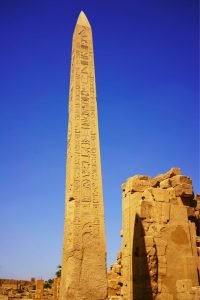
Why the Unfinished Obelisk Was Never Completed
The Unfinished Obelisk was abandoned during its construction due to a fatal flaw: a crack in the granite. As the workers neared the final stages of carving the obelisk, a crack appeared in the stone, rendering it unusable. For the ancient Egyptians, perfection was everything—especially when it came to monuments meant to honor the gods and pharaohs. A flawed obelisk could not be offered to the gods, nor could it stand as a testament to a ruler’s greatness.
Rather than waste further resources on a flawed monument, the workers abandoned the obelisk in place, leaving it as a monumental failure. But was it truly a failure?
Today, the Unfinished Obelisk offers modern archaeologists and historians a priceless opportunity to study the techniques and processes of ancient Egyptian stonework. It is a rare example of an ancient project frozen in time, allowing us to learn more about the methods and challenges faced by these incredible builders.
The Tragic Flaw
The crack that doomed the Unfinished Obelisk can still be seen today, running diagonally across the granite surface. It’s a sobering reminder of the risks involved in such ambitious construction projects. One crack, one miscalculation, and years of planning and labor could be rendered useless.
It’s easy to imagine the frustration and disappointment of the workers as they realized the monument they had labored over would never stand. The Unfinished Obelisk is not just a story of grandeur but also a reminder of the limitations of human ambition, even for a civilization as advanced as ancient Egypt.
Lessons and Insights Gained from the Unfinished Obelisk
The Unfinished Obelisk may not have stood proudly among the obelisks of Egypt, but it serves a crucial role in our understanding of ancient engineering and the risks inherent in such monumental projects.
Engineering Lessons from the Unfinished Obelisk
The scale of the Unfinished Obelisk suggests that the Egyptians were constantly pushing the limits of their own technology. As they gained experience and knowledge from previous construction efforts, they sought to build ever-larger monuments, which came with greater challenges.
The crack in the Unfinished Obelisk tells us that even the Egyptians, with all their expertise, faced limitations. Stone is a naturally unpredictable material, and despite the careful planning and craftsmanship that went into carving the obelisk, they could not control every aspect of the quarrying process.
Ancient Egypt’s Ambition and Innovation
The Unfinished Obelisk also reveals much about the ambition of ancient Egyptian society. The sheer size of the obelisk shows that the Egyptians were not content with simply repeating the achievements of the past. They were always looking to surpass what had come before, to create bigger, more impressive monuments to demonstrate their power and connection to the divine.
Despite its incomplete status, the Unfinished Obelisk still stands as a monument to the ambition and innovation of ancient Egypt. The very fact that the Egyptians attempted such a massive project speaks volumes about their skill, organization, and desire to leave a lasting legacy.
Visiting the Unfinished Obelisk Today
If you’re planning a trip to Egypt, the Unfinished Obelisk should be high on your list of must-see historical sites. Located in the northern quarries of Aswan, the site is easily accessible and offers a fascinating glimpse into ancient construction techniques.
How to Get There
Aswan is well-connected to other major cities in Egypt, including Cairo and Luxor, making it an easy addition to any Egyptian travel itinerary. Once in Aswan, the Unfinished Obelisk site is just a short drive from the city center and can be visited as part of a day tour exploring the region’s many archaeological treasures.
What to Expect When Visiting the Unfinished Obelisk
The Unfinished Obelisk site is an open-air museum, allowing visitors to walk among the granite quarries and get up close to the massive obelisk itself. The scale of the monument is truly awe-inspiring, and it’s easy to spend hours examining the details of the stonework, imagining what the finished obelisk might have looked like.
There are also informative signs and guides available on-site to help explain the history and significance of the Unfinished Obelisk. If you’re lucky, you may even be able to join a guided tour led by an Egyptologist who can provide even deeper insights into the site’s history.
Tips for Visiting the Unfinished Obelisk
- Best Time to Visit: Aswan can get extremely hot, especially in the summer months. The best time to visit is during the cooler months of October through April, when temperatures are more pleasant.
- What to Wear: Be sure to wear comfortable walking shoes and lightweight, breathable clothing. The quarry site is rocky, and you’ll want to be prepared for walking over uneven terrain.
- Bring Water: The site is exposed, with little shade, so be sure to bring plenty of water to stay hydrated.
- Combine with Other Sites: Aswan is home to several other incredible historical sites, including the Temple of Philae, the Aswan High Dam, and the Tombs of the Nobles. A visit to the Unfinished Obelisk can easily be combined with these sites for a full day of exploring Aswan’s rich history.
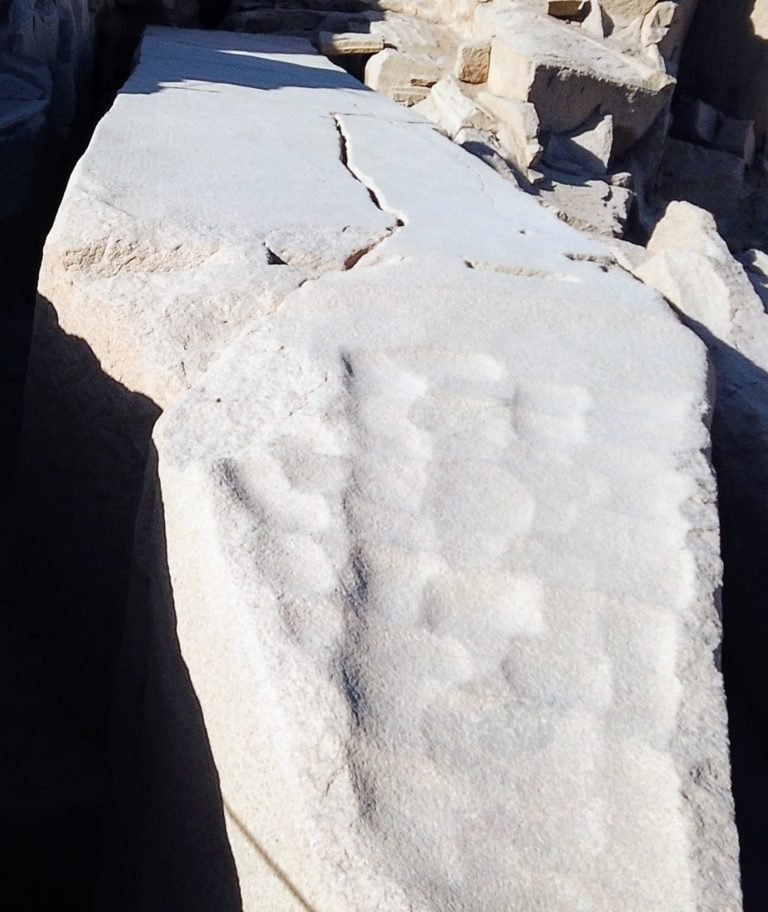
Conclusion: A Monument Frozen in Time
The Unfinished Obelisk may never have been completed, but its legacy lives on. As a monument frozen in time, it offers us a rare and invaluable glimpse into the construction techniques, ambitions, and challenges faced by the ancient Egyptians.
It stands as a reminder of human ingenuity and determination, as well as the unpredictable forces of nature that can shape or shatter even the grandest of plans. Today, the Unfinished Obelisk continues to captivate the imagination of all who visit it, offering a unique window into Egypt’s fascinating past.
So, the next time you find yourself in Aswan, make sure to stand in the shadow of the Unfinished Obelisk and reflect on the story it tells—a story of ambition, perseverance, and the beauty of imperfection.
Share this with your friends
Additional Blog Posts
Past Blog Posts
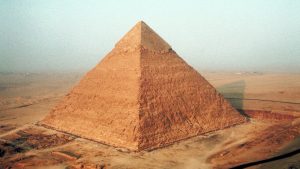
Private Egyptologist Tours: Unlock Egypt’s Hidden Secrets in Luxury
Step beyond the velvet ropes of Egypt’s most iconic sites. With a private Egyptologist as your guide, you’ll uncover hidden chambers, untold stories, and experience ancient wonders far from the tourist crowds. This is discovery at its most exclusive—where history meets luxury.

Egypt Temple Etiquette & Dress Tips for Luxury Travelers
Planning a luxury trip to Egypt? Don’t let poor wardrobe choices or etiquette missteps ruin your temple visits. This guide reveals what to wear, how to behave, and how to elevate your experience with style and cultural respect. Whether you’re aiming for stunning photos or exclusive access, you’ll learn how to navigate Egypt’s sacred sites like a seasoned elite traveler.
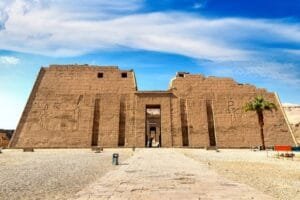
Why Medinet Habu Is Egypt’s Best-Kept Secret Temple
Most travelers never set foot in Luxor’s most breathtaking secret—Medinet Habu Temple. While crowds pack Karnak and the Valley of the Kings, this masterpiece of Ramses III stands quietly in the background, holding stories of power, battle, and beauty. Ancient Navigator takes you where others don’t—into Egypt’s hidden heart.






